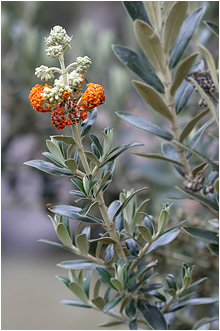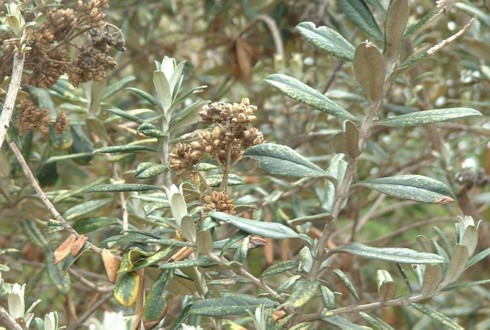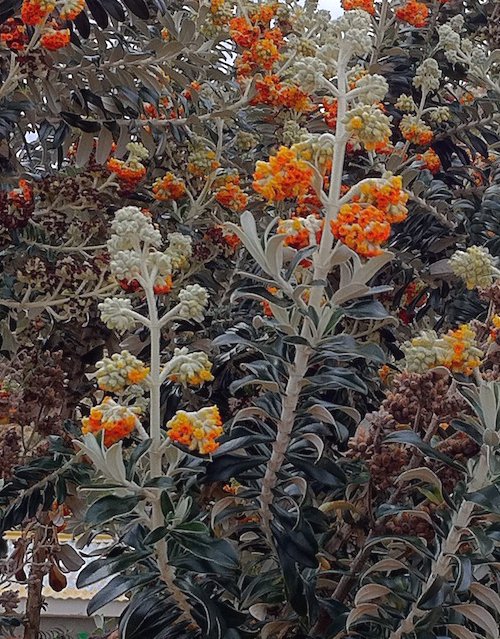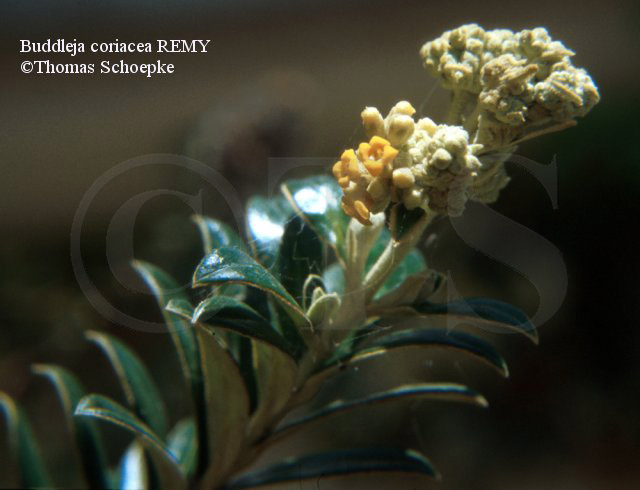Buddleja coriacea
Buddleja coriacea
Buddleja coriacea is a species of the genus Buddleia ( Buddleia ) in the family of the figwort family ( Scrophulariaceae ). It is native to high altitude Puna regions of the Andes.
Description
Buddleja coriacea grows as a small tree with spiral stem, plant height 2-8 meters with a trunk diameter of 15 to 60 centimeters.
His small orange flowers bloom from January to July and the orange fruits ripen from May to July.
Trivial names
In Quechua, this type is called puna Kiswar or qulli and Aymara qulli. Therefore, the Spanish name derives from colle. The name Kiswar is used for various Buddleja species, but especially for Buddleja incana.
Dissemination
Buddleja coriacea grows in the Andes (Bolivia and southern half of Peru ) at altitudes between about 3000 and 5000 meters, especially in the higher zones Puna and Suni by Javier Pulgar Vidal.
The species was at the time of the Incas planted as a forest tree ( mallki in contrast to wild -growing trees sach'a ). Since then, the stock through the use of firewood, timber and grazing has declined sharply.
Buddleja coriacea is intended for reforestation activities in the Andean region, together with also native Polylepis and Escallonia species, Schinus molle and Buddleja incana.
Use
From the hard wood of Buddleja coriacea tools are traditionally made, including the " Fußpflug " ( chakitaklla ), but also spoons and ladles.
The leaves are - similar to that of Buddleja incana - traditionally used for envelopes for toothache; its infusion is used as a diuretic. The orange - red flowers provide a natural yellow dye.
System
The type Buddleja coriacea was first described in 1847 and published by the French botanist Jules Remy Ezekiel.
Synonyms for Buddleja coriacea J.Rémy. are Buddleja buxifolia Kraenzl. , Buddleja oblongifolia Rusby, Buddleja rhododendroides Kraenzl. , Buddleja ususch Kraenzl. , Buddleja utilis Kraenzl ..









